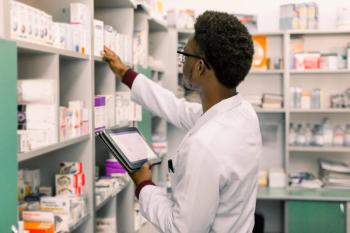
Send round for the pharmacist
Several articles, published over the past several years, have demonstrated the benefit of clinical pharmacy rounding in intensive care units. Benefits documented include improved quality of care as well as cost savings to the institutions. Our health system recently added clinical pharmacists to patient rounding and found that it has improved our patients' outcomes.
Several articles, published over the past several years, have demonstrated the benefit of clinical pharmacy rounding in intensive care units. Benefits documented include improved quality of care as well as cost savings to the institutions. Our health system recently added clinical pharmacists to patient rounding and found that it has improved our patients' outcomes. What follows is an account of how we put such a program into place and how other hospitals can learn from our experience.
Our organization, Virtua Health, the largest nonprofit healthcare provider in southern New Jersey, is made up of four community hospitals. Three of our four inpatient facilities provide on-site pharmacy coverage 24 hours per day, seven days per week. There is a part-time or full-time clinical pharmacist at each site.
Driving the initiation of interdisciplinary rounds in our critical care areas was the physician leadership in our health system, supported by our patient safety and outcomes department and the Leapfrog Group's standards. Patient and medication safety was identified as a key goal of Virtua Health in 2001. It was agreed that each of our four institutions would develop a format for interdisciplinary ICU rounds beginning in the fall of 2002. Identified objectives included evaluating the need for continued stay in the ICU, improving patient safety, and optimizing the use of therapeutic interventions.
In addition to the medical director of each ICU, members of our critical care team included representatives from clinical pharmacy, social services, infection control, nutrition services, respiratory therapy, and nursing. Pharmacy students may also participate on rounds.
Clinical pharmacy recommendations focus on ensuring that appropriate patients meet Peer Review Organization (PRO) indicators for myocardial infarction, evaluating the need for stress ulcer prophylaxis and venous thrombosis prophylaxis, ensuring that drugs are dosed appropriately for renal impairment, and evaluating the continued need for sedation in mechanically ventilated patients. The pharmacists evaluate the appropriateness of anti-infective therapy, conduct pharmacokinetic monitoring, and provide pain assessment recommendations and patient education, when indicated.
A clinical pharmacy coordinator works with the clinical pharmacists at each division, in order to standardize the way data are collected and reported back to the medical staff. A system to communicate with the medical staff had to be developed, since many of our attending physicians are not present during morning rounds. A clinical pharmacy intervention sheet was developed to help with communication. The interventions at each institution are documented and compiled by the clinical pharmacy coordinator. A summary of these interventions is then reported to appropriate committees and shared in a Clinical Pharmacy Newsletter on a quarterly basis.
During the third quarter of 2002, 164 clinical interventions were documented in the ICU. This increased to 505 during the fourth quarter of 2002, and the outcomes of our recommendations were monitored. During this quarter, only 49% of the recommendations were accepted. The total number of interventions decreased to 384 for the first quarter of 2003. However, the percentage of recommendations accepted increased to 84%. This demonstrated that the pharmacists were being more selective in their interventions and that these interventions were much more likely to be followed. We are continuing to document all interventions made on daily rounds, but we are reporting all pharmacy interventions by category rather than by unit.
The development of interdisciplinary critical care rounds in our system has given clinical pharmacists the opportunity to impact patient safety and optimize pharmacotherapy for acutely ill patients. The rounding forum has provided a learning opportunity for team members, which is often difficult to achieve in a community hospital setting. Sharing information among team members has been helpful in making clinical decisions related to patient care and has saved valuable time. This rounding process is dynamic, and we anticipate changes over the coming years, as Virtua reassesses its benefits to patients at all our divisions of our health system.
The author is a clinical pharmacist at Virtua Health, Marlton, N.J. She wishes to acknowledge the help of her colleagues: Lori Edell, Pharm.D., clinical pharmacy coordinator; Robin Keyack, R.Ph., clinical resource manager; Barbara Zambon, R.Ph., clinical pharmacist; Jane Dateshidze, Pharm.D., MBA, clinical pharmacist; and Diana Pascu, R.Ph., clinical pharmacist.
Newsletter
Pharmacy practice is always changing. Stay ahead of the curve with the Drug Topics newsletter and get the latest drug information, industry trends, and patient care tips.





























































































































